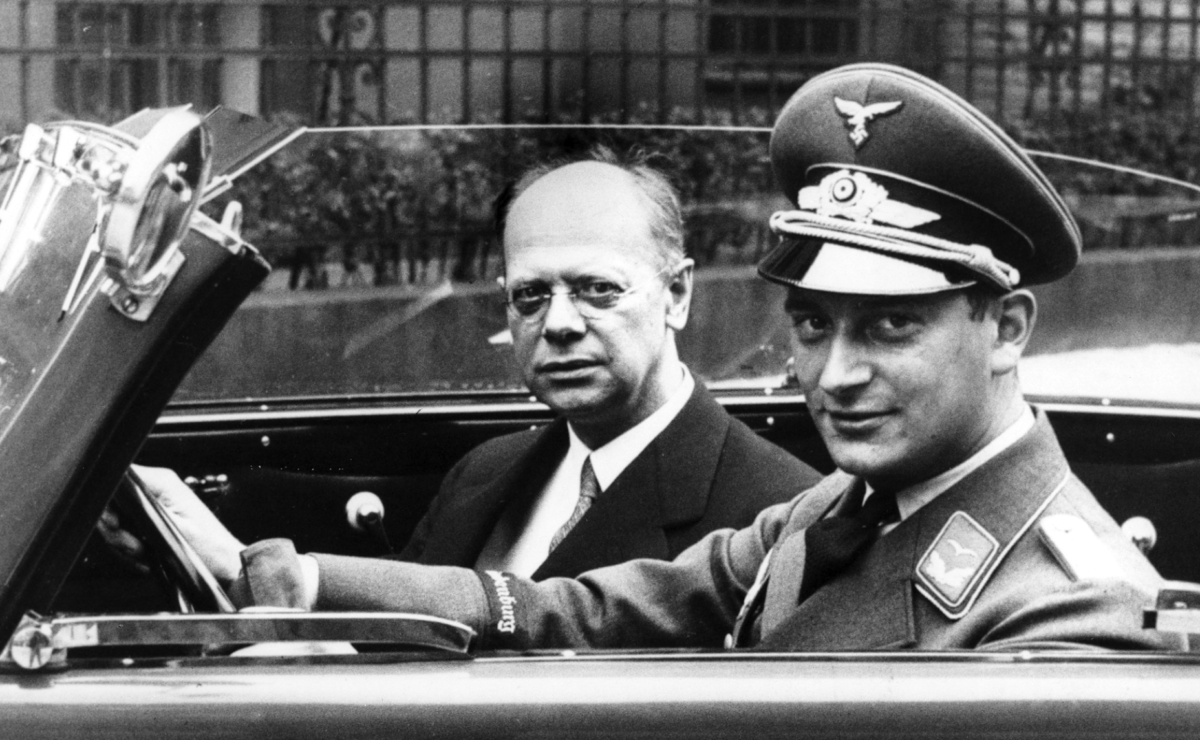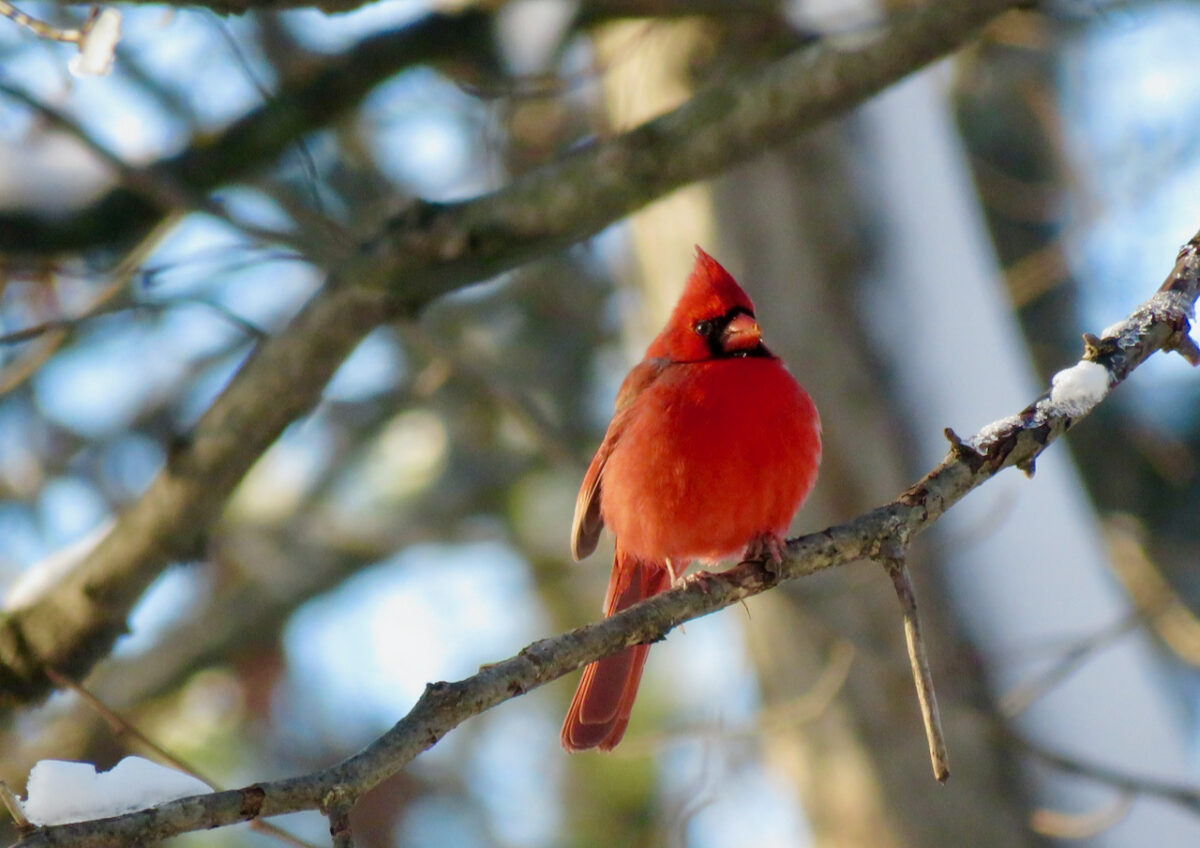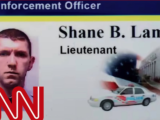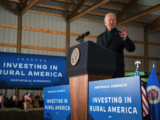
A file photo shows Prince Louis Ferdinand of Prussia, Lieutenant of the Reserve in the German Air Force, wearing a Nazi uniform, taking Louis P. Lochner, chief of the Berlin bureau of the Associated Press and 1939 Pulitzer Prize winner, in his car out to the airport: AP/NAJ screen shot
The Big Picture –
By Glynn Wilson –
WASHINGTON, D.C. — It would be nice to wake up one winter morning in America and turn on the news to find out that the world is at peace, prosperity abounds.
How about this for a lede story banner headline?
THE WORLD IS AT PEACE, THE ECONOMY IS FINE
But you know as well as I do that this is not the nature of news, or even how life works. If it was, then we the people could concentrate on the simple things that make life worth living, like a fine cup of coffee, a hike in the woods, photographing birds chirping in a tree surrounded by snow.

A male Northern cardinal [Passeriformes Cardinalidae] in the first blizzard of 2022: Glynn Wilson
People could go about their daily lives without constantly having to worry about a fascist dictator taking over our country.
On this typical Wednesday morning in January, the first thing to pop into my email inbox was a story from the Columbia Journalism Review detailing how the Associated Press (AP) was in league with the Nazis during World War II. The story is about a German historian who is about to come out with a book called Newshawks in Berlin: The Associated Press and Nazi Germany, which will include a report alleging “a shocking wartime collaboration,” as CJR tells it.
During Adolf Hitler’s rise to power, the Berlin bureau of the Associated Press not only bowed to Nazi censorship, she says, agreeing to conditions including the omission of material perceived as “calculated to weaken the strength of the Reich abroad or at home.” But the bureau also collaborated with the Nazi propaganda ministry.
One of four photographers employed by the AP in Berlin, Franz Roth, worked for a propaganda division of the SS, Scharnberg found. That’s Hitler’s Nazi Party Secret Security detail.
Photos from the AP’s archives were used in anti-Semitic literature, including a widespread pamphlet called “Der Untermensch” (“The Sub-Human”).
Until Scharnberg’s report, these details had largely been forgotten, according to CJR.
“Everybody at the AP kind of looked around at each other and said, ‘Did you know about this’?” Ann Cooper, co-author of the forthcoming book, says in an interview. “And they didn’t.”
(At the time, the agency denied ever having “collaborated” with the Nazis.)
Cooper’s late husband, Larry Heinzerling, and Randy Herschaft, both veteran AP journalists, were tasked with investigating Scharnberg’s report; in the process, they discovered extensive records detailing the AP’s wartime operations, and ultimately decided to write a book about them. After Heinzerling died in 2021, Cooper — herself a journalist, who served as NPR’s Moscow bureau chief during the last years of the Cold War and who taught at Columbia Journalism School — worked with Herschaft to complete the manuscript. It will be published by Columbia University Press in March.
Newshawks in Berlin delves into choices that the AP made in reporting from Nazi Germany, not least the decision to stay inside the country (until the U.S. entered the war) despite strict censorship.
Ann Cooper on the AP in Nazi Germany and the politics of war reporting
But that’s not the end of it.
There’s another email from The American Prospect, a liberal political magazine, with a story written by Rick Perlstein.
He says that the most interesting voice thinking about the connections between interwar Europe and the present-day U.S. happens to be a scholar of both. John Ganz’s forthcoming book When the Clock Broke illuminates the exceedingly odd politics of the U.S. in 1992 — including some haunting harbingers of America’s Trumpian turn: Fascism is always less simple than we think it is.
“We have this image in our heads — and this is really hard to get out of people’s heads — of the fascist rise to power that comes from fascist propaganda,” Ganz explains.
The stereotype is thugs marching into the seat of government with truncheons, then marching out having seized state power.
“It is much more political than that. It has much more to do with negotiations between established political factions and elites … None of these movements were destined to succeed. There was a lot of luck, and there were a lot of contingencies.”
“Most fascist parties and movements … never seized any power,” Perlstein writes. “They were footnotes.”
“That’s an important insight to address to observers who cite the sheer ridiculousness, abundant incompetence, and outright insanity within Donald Trump’s movement, and have a hard time placing it in the same universe with the movement that almost conquered Europe,” he says. “After all, if Hitler’s little gang of beer hall brawlers had failed to achieve power, they surely would have looked precisely as ridiculous as all that.”
As Ganz puts it, “Everything kind of looks farcical until it doesn’t.”
American Fascism: Author and scholar John Ganz on how Europe’s interwar period informs the present
All of this reminded me of another story that came to light in recent years from my home state of Alabama during the early days of the Civil Rights movement.
A few years back, it was revealed that a photographer for The Birmingham News, Tom Lankford, had engaged in a close transactional relationship with Birmingham’s police department under Eugene “Bull” Connor, the racist public safety commissioner and sympathizer with the fascist Ku Klux Klan. As he recounted to historians, Lankford would ride shotgun on police raids, taking photographs that painted officers in a positive light while incriminating Connor’s enemies, Black and white. In exchange he was given access to scoops that other reporters could only dream of landing.
Tom Lankford, 85, Dies; Southern Journalist With Divided Loyalties
One my closest friends from the mid-1980s until he killed himself in 2003, the photographer Spider Martin, told me horror stories about trying to cover the Civil Rights movement when he too worked for the News, a conservative mass circulation chain newspaper owned by the Newhouse family.
Lankford worked as a one-man intelligence unit for Vincent Townsend, the powerful assistant publisher of the News. Lankford used an expense account provided by Townsend to buy equipment to spy on civil rights leaders.
Spider told me that other photographers at the News, Ed Jones and Tom Self, were also involved in the effort to cover up the Civil Rights movement, often throwing up road blocks to publishing news about the movement when he went out and photographed key moments. They would leave rolls of film in the chemical developer too long and ruin the film. Other racist editors at the News buried the coverage deep inside the paper, or simply refused to run stories at all.
There is a growing academic literature about all of this, and the News actually went out of its way to apologize on its editorial page awhile back. But I’m not here to write a dissertation about it today.
I’ve been writing about the clear collaboration between the corporate press and fascist capitalists for years. We have an entire 20 year archive of this, gearing up especially when Donald Trump appeared to have a chance to win the presidency in 2016.
I saw Donald Trump coming, when everybody else was covering his every word and tweet in the never ending struggle to remain in business by telling “both sides” of the story, when even members of his own administration and the D.C. Deep State thought Trump would change after taking over in the White House. They actually thought they could control his worst authoritarian tendencies.
Fascist Dictator Donald Trump Stuns American Establishment, Defeats Hillary Clinton for President
Well, here he is again, and every news organization in the land has been covering the Iowa Caucus and the New Hampshire Primary as if the news was normal, that Trump is on the verge of locking up the Republican nomination again, even as he faces 91 felony counts in four different legal cases.
I am not the only critic to warn about this. Margeret Sullivan recently stepped down as the media columnist for The Washington Post and started her own newsletter and podcast, where she takes on the traditional media’s approach to covering Trump. (I don’t subscribe to Substack newsletters and podcasts, but you can look her up if you don’t believe me).
Even New York Times columnist Tom Edsall admits to normalizing Trump again in 2024.
Some of this coverage appears to make it seem that a Trump dictatorship is “inevitable,” and nothing would be better for the economy of news than if he did win the presidency again, keeping alive the existential anxiety and threat Trump poses to American democracy. But that would not be the best thing for the country. Surely we can do better.
Related
Is a Trump Dictatorship Inevitable?
How Existential Anxiety Leads to Authoritarianism
___
If you support truth in reporting with no paywall, and fearless writing with no popup ads or sponsored content, consider making a contribution today with GoFundMe or Patreon or PayPal. We just tell it like it is, no sensational clickbait or pretentious BS.













